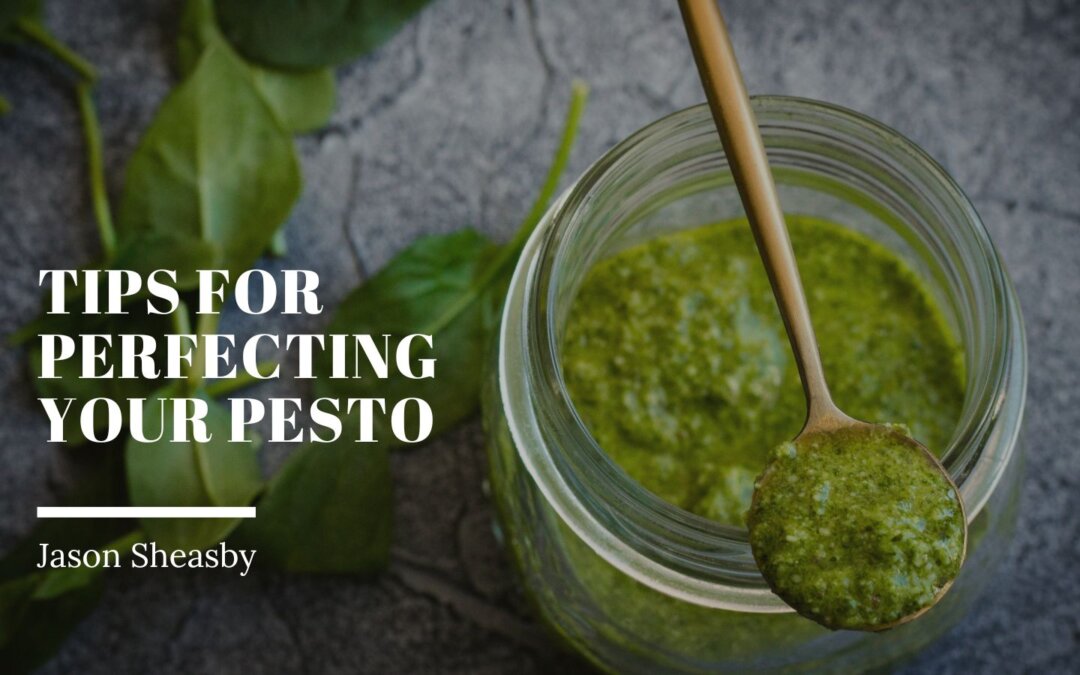Pesto has graced tables with its fresh and rich flavors. It’s a culinary emblem that combines simple ingredients to create a versatile condiment. Traditionally, pesto comprises fresh basil, garlic, pine nuts, coarse salt, Parmesan cheese, and a good quality olive oil. Its simplicity is deceiving, as achieving the perfect balance and texture requires a nuanced understanding of each ingredient and the method employed.
Pesto has a rich history dating back to Roman times, though the version we know today has its roots firmly planted in Genoa, Italy. The name ‘pesto’ originates from the Italian ‘pestare,’ which means crush or pound. This method of crushing herbs and garlic is a time-honored tradition that has transcended generations. The Genoese variant is recognized globally, and its traditional preparation method involves using a marble mortar and wooden pestle. This method blends the ingredients and extracts the essential oils, producing an aromatic and full-bodied sauce. Over time, modern adaptations have emerged, with food processors and blenders offering a quick, albeit less authentic, preparation method. Understanding the history and traditional preparation methods is essential to appreciating the authenticity and depth of flavors in a well-made pesto.
Quality of Ingredients
A superior pesto’s foundation lies in its ingredients’ quality. Fresh basil is paramount; it should be bright green, aromatic, and free from black spots. Pine nuts are another essential component, providing a creamy texture and subtle nutty flavor. Opt for Mediterranean pine nuts if possible, as they are superior in taste. High-quality Parmesan cheese, aged for at least 24 months, will add an irreplaceable depth of flavor. The olive oil should have a fruity, peppery profile that complements the other ingredients. Lastly, use fresh garlic sparingly to avoid overpowering the delicate balance of flavors. Each element should shine, creating a harmonious blend of flavors.
Method of Preparation
Traditional pesto preparation involves a marble mortar and a wooden pestle, a method that’s stood the test of time. This method crushes the ingredients, releasing their essential oils, as opposed to chopping them, which is what happens in a food processor. The result is a more aromatic, fuller-flavored pesto. If time permits, embracing the traditional method is well worth the effort. However, a food processor can be used if you’re short on time. It’s important to pulse the ingredients rather than blending them continuously to achieve a coarse texture. Regardless of the method used, add the olive oil gradually, ensuring the mixture emulsifies appropriately, which is critical to achieving the desired consistency and flavor.
Exploration of Variation
Pesto is incredibly versatile; exploring variations can lead to delightful culinary discoveries. For instance, substituting basil with other fresh herbs like parsley, arugula, or even spinach can yield a different yet delicious result. Similarly, experimenting with different nuts, such as walnuts or almonds, and cheeses like Pecorino Romano or Asiago can offer a new dimension of flavor. Furthermore, adding ingredients like sun-dried tomatoes or roasted red peppers can transform the traditional pesto into a vibrant, unique sauce. These variations provide a different taste, cater to other dietary preferences, and allow for creativity in the kitchen.
Perfecting your pesto is a journey of understanding and appreciating each ingredient, the traditional preparation method, and the endless possibilities that variations bring. Embracing the quality of ingredients, respecting the conventional preparation methods, and daring to venture into new flavor territories will significantly elevate your pesto-making skills. This enriches your culinary repertoire and brings a slice of Italian tradition to your table. Pesto is more than just a sauce; it’s a narrative of Italian culinary tradition, a story told through vibrant flavors and textures. Each attempt at perfecting your pesto is a step closer to mastering a timeless piece of Italian culinary heritage.

